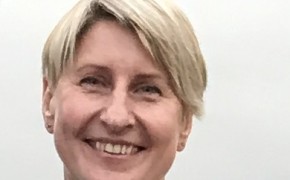Construction of the two specified wastewater treatment facilities from the stormwater runoff dischargers by installing the natural treatment measures.
The GP area was facing problems related to water management and water status, among them are for example: no rain water treatment and high loads and diffuse leakage of nutrients contributing to eutrophication.
The following natural wastewater treatment processes were foreseen in treatment facilities: settling and filtration of suspended solids, organic material absorption on the plants and soil, microbial degradation and assimilation of organic compounds, uptake of nutrients and metal compounds in selected plants.
The Pastauninkas stream collects the flow of 253 l/s from the area of 9.35 ha surface drainage (discharger K11 (K-12)), while only the initial, the most polluted wastewater flow – 40 l/s – needs treatment, since the other part of stormwater in most cases is not polluting. The flow rate near the Akmena River, Kranto g. (discharger K-25) reaches 309 l/s from the area of 8.44 ha, while only the initial flow – 50 l/s – needs treatment. The following technological solution was chosen: flow distribution well, pre-dam, retention pond, flow accounting and sampling well, and groundwater monitoring well.
In order to ensure the facilities’ conformity to architectural and aesthetic aspects (the landscape) of the area and to ensure slow surface water flow and pollutant settling, it was resolved to make ponds with small bank slopes.
The main stakeholders - local municipality, water company.
Resources needed
The construction company to make such type of works and app. 150 000 EUR
Evidence of success
The good practice helped to improve water status mainly through reduction of nutrients, as well to reduce the negative impact of anthropogenic pollution on water status.
Up-to-date solutions for surface runoff treatment shall improve water
quality and ecological status of the Pastauninkas stream, the Akmena
River and, finally the Baltic Sea, at the same time developing new
ideas for the stormwater management in other towns and cities and
the protection of water bodies.
Difficulties encountered
During the implementation of this project a series of unprecedented
issues occurred. For instance, the ponds overlap with the stream
protection strip where construction is restricted. However, in order to
solve this issue a recreational area with walking paths was developed.
Potential for learning or transfer
The retention ponds shall give an opportunity to monitor changes in surface water pollution and treatment efficiency.
Up-to-date solutions for surface runoff treatment improve water quality and ecological status of the Pastauninkas stream, the Akmena River and, finally the Baltic Sea, at the same time developing new ideas for the stormwater management in other towns and cities and the protection of water bodies.
Other legal, social and other issues were successfully solved thanks to
the benevolent work of employees from all fields.
Taking into account such factors as the location of planned facilities, the existing geological conditions, the area of surface drainage basin and the resulting quantity of surface water as well as its physico-chemical properties, wastewater treatment requirements and sensitivity of water bodies / wastewater receivers, it was decided to apply the following technological solutions: to make surface water exfiltration and retention ponds.
Tags: Wastewater, Water, Water management, Water technology








